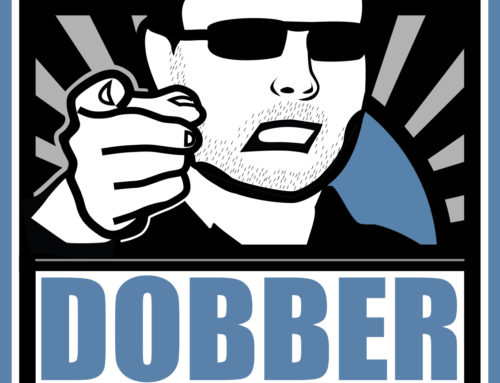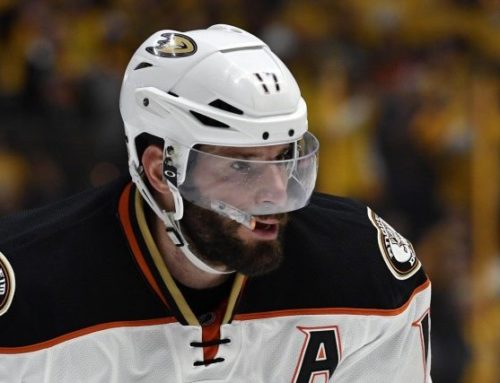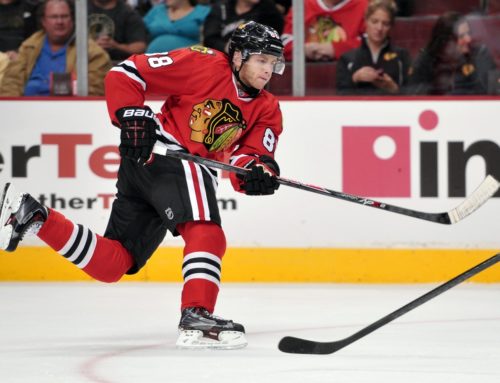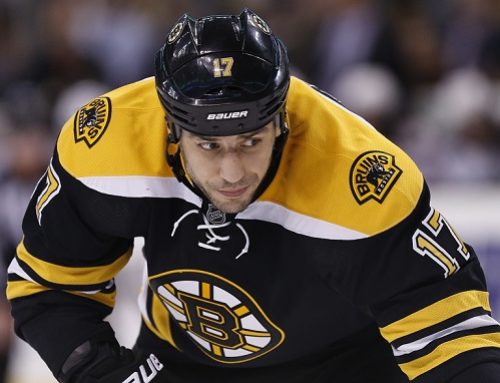
The term "freak" is defined in the dictionary as "Claude Giroux". OK, it’s not really, but the definition does have a description of our boy dressed in orange.
freak1 [freek] noun
1. any abnormal phenomenon or product or unusual object; anomaly; aberration.
2. a person or animal on exhibition as an example of a strange deviation from nature; monster.
Giroux is a human highlight reel and one of those players you can truly say makes the players around him much better – just ask Jaromir Jagr. Instead of a magic cap, Giroux has those magic hands that allow him to do things you don’t see anywhere else. Those hands have grouped him with such elite scorers as Evgeni Malkin and Henrik Sedin – and all of this at the tender age of 24.
Currently sitting second in league scoring, Giroux is in only his fourth full year in the league. After a breakout 76-point performance last season, Giroux’s meteoric rise to stardom has yet to slow as he looks to set career bests in every scoring category. Important to note is the point-per-game status Giroux can presently boast is not far behind superstar Evgeni Malkin.
Giroux has incredible vision and an innate ability to find his teammates in open areas. Always a top producer in the assist department, a bonus for Giroux owners is his all-around game. This brings goal scoring and a gritty style that boosts his value in rotisserie leagues.
Over three seasons in the QMJHL, Giroux carried a .67 goals-per-game average. While junior success doesn’t necessarily translate into NHL success, Giroux wasn’t typical in his development. We see a lot of players have major success in their last one or two seasons of junior as they become dominant players who no longer find much of a challenge at that level. It’s important to note those players who are in their final year of eligibility are able to dominate due to size, experience and the role they play. Giroux was not this player.
Right from his rookie season Giroux was able to produce like a superstar. His numbers are pretty consistent in each category, which is a blessing in disguise for poolies when making pre-season prognostications. Knowing what to expect from a player allows GMs to make necessary tweaks and fill holes prior to the season’s start, as opposed to paying a premium for patch fixes during the season.
Giroux has proven his value not only in the regular season but with fantastic post-season statistics as well. While most pools don’t carry over to the playoffs, his production may not have a direct effect on your team or league. What it does represent is Giroux’s consistency and his ability to produce under pressure. Nothing seems to faze this kid. Over three seasons and 40 playoff games Giroux has amassed 38 points in 40 games. Incredible!
Also incredible is Giroux’s power play production – currently first in the league by a wide margin. With 28 power play points his closest competition has a measly 22 in comparison. That’s sexy. And, other than his plus/minus and penalty minutes, both of which are categories that fluctuate a fair amount year-to-year, the other cats are always competitive. His shots totals are on an upwards trajectory. Another thing to consider is you have a gem in Giroux if your league counts hits.
We all know Giroux is an elite offensive talent but is it too early to be calling him a top ten fantasy player in the league, let alone a top five? Not in a salary cap league it isn’t. If you can believe it (if you can’t, check capgeek.com), Giroux has three years left on a Christmas gift with a tag on it that says "To Philidelphia, thanks for everything!"
How Philly can give JVR a six-year deal with a $4.25 million cap hit, and Claude "Happy to make your day" Giroux is willing to sign a three-year extension with a hit of $3.75 million is beyond me. In my opinion, Giroux is far superior to JVR – and I even like James.
Mini-rant over, Giroux’s contract is as golden as Midas’ touch. He doesn’t have the productive NHL history that most of the other elite players in the top five do, but he’s a lot like Stamkos – far too good to ignore. The table below compares his cost/production ratio from the past two and half seasons to the other elite players we’ve covered.
|
Player |
Cost per goal avg |
Cost per assist avg |
Cost per point avg |
Cost per SOG avg |
Cost per PPP avg |
Cost per PIM avg |
|
Eric Staal |
$317,308 |
$201,219 |
$121,324 |
$29,152 |
$358,695 |
$137,500 |
|
Rick Nash |
$251,612 |
$251,612
📢 advertisement:
|
$125,826 |
$26,621 |
$458,823 |
$169,564 |
|
Alex Ovechkin |
$244,576 |
$198,717 |
$109,637 |
$27,809 |
$340,659 |
$167,341 |
|
Evgeni Malkin |
$255,882 |
$177,551 |
$103,571 |
$26,851 |
$300,000 |
$133,846 |
|
Daniel Sedin |
$160,526 |
$98,387 |
$61,000 |
$21,864 |
$179,412 |
$141,860 |
|
Steven Stamkos |
$150,000 |
$182,926 |
$82,416 |
$26,408 |
$234,375 |
$120,968 |
|
Claude Giroux |
$156,250 |
$78,125 |
$52,083 |
$20,380 |
$133,928 |
$107,142 |
The table really exemplifies how valuable Giroux is in a salary cap league. Even including his 46-point sophomore campaign, which included low peripherals, Giroux’s low cap hit provides incredible value. I have no reason to believe he isn’t an 80-90 point player, so that value over the next two seasons can only grow if he proves to be consistent with his elite production.
Giroux is easily the fourth most valuable sal-cap player available. It could be argued that he should be ranked higher considering his extreme value cap hit. It still boggles my mind how Philly got him to sign that deal – us in salary cap leagues would be much better off if more of the elite players were willing to sign such friendly deals and produce like Giroux. Straight up, there isn’t another player I’d rather have on my team who makes $3.75 million or below.





 EDM
EDM FLA
FLA MIN
MIN L.A
L.A TOR
TOR DAL
DAL NYI
NYI S.J
S.J COL
COL CHI
CHI OTT
OTT
